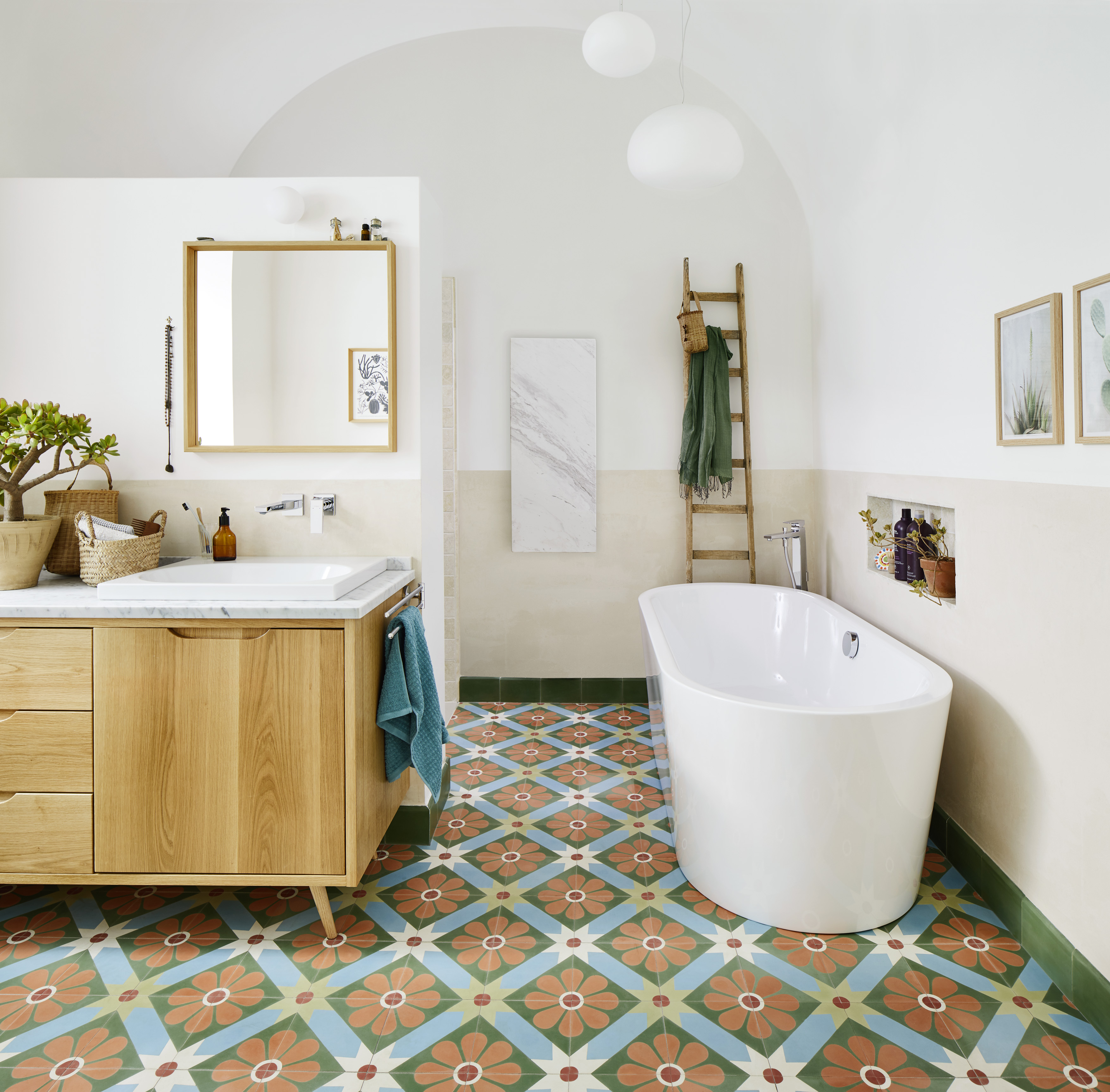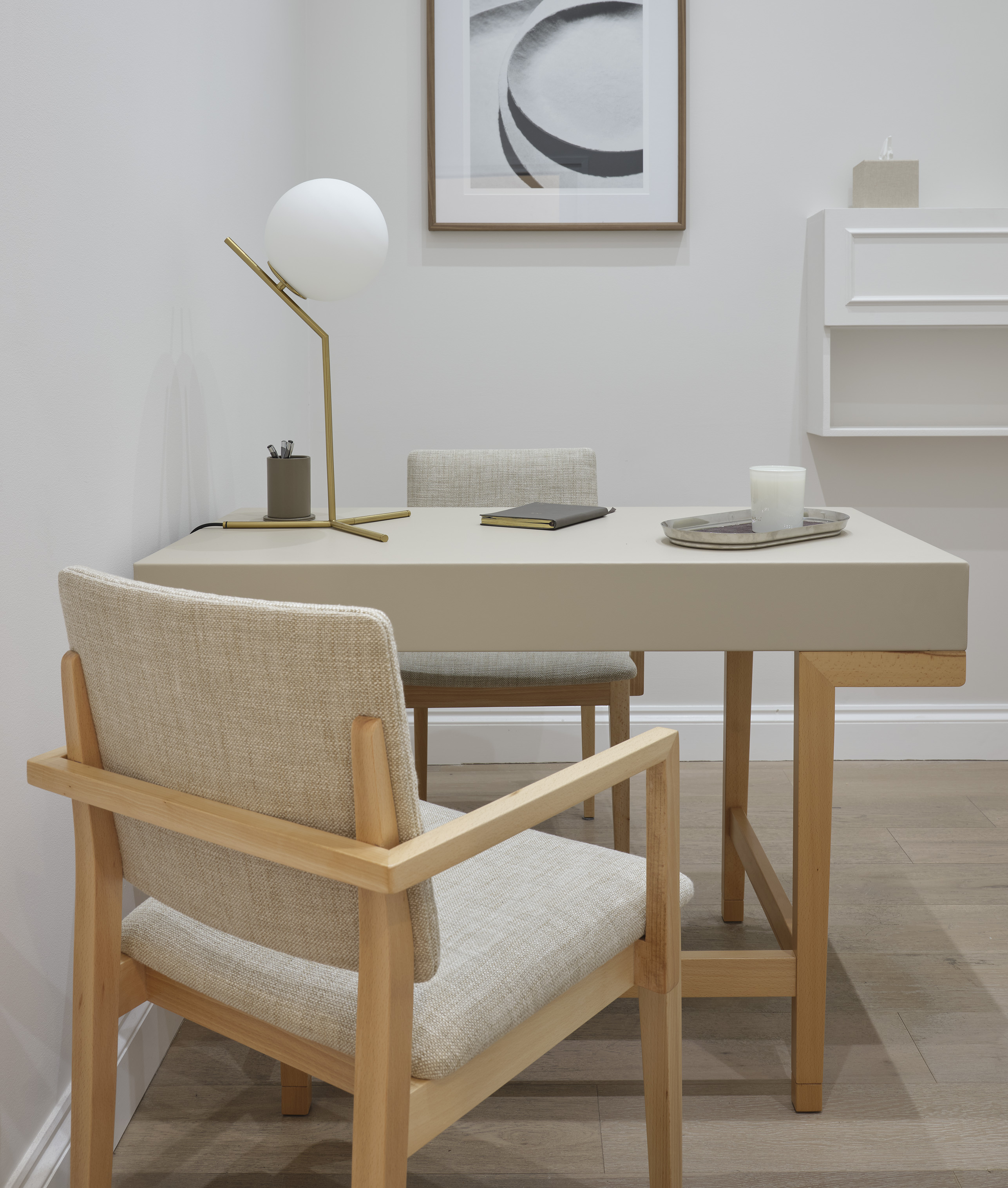How to shop sustainably for your home – 12 stylish ways to make a statement
Try these sustainable shopping ideas to furnish and accessorize your rooms the greener way

Kaitlin Madden

How do you shop sustainably for your home? Buying items for our homes is essential, not to mention fun, but many of us want to reduce our impact on the planet as we do so while maintaining the style, comfort and functionality of all our spaces.
‘As an ethical and holistic designer, every decision I make has an environmental or social impact, so I am rigorous when it comes to selecting “better” products for my clients,’ says Maria Tibblin, Holistic Design Director, Maria Tibblin. ‘Whilst we can’t always be perfect, and sometimes the information we need is not clearly presented or available, the more we ask retailers and suppliers the right questions regarding product origins and how they have been made, it will inevitably impact the products they choose to stock and sell.’
We’ve put together top options for eco home improvements big and small, to help you make sustainable choices while you shop.
1. Choose sustainable furniture for interiors and the backyard

When you’re choosing furniture trends for inside or the backyard, there are a whole host of options. You might want to take the re-use route and shop for second-hand pieces at auctions or in store. Items might not start off just right for your style, but you can give them a makeover, or call on local restorers and upholsterers to update them or enhance comfort.
Consider, too, items made with materials that would otherwise have ended up in a landfill. ‘Forging unique designs from materials that would otherwise have ended up in landfill is one of the most sustainable choices we can make,’ says James Barker, Managing Director at UK-based furniture brand Barker and Stonehouse. ‘Reclaimed, recycled and recyclable furniture not only minimizes waste, but it has a much lower carbon footprint too, as the energy that would have been required to harvest or create that material anew is saved.
Barker and Stonehouse, for example, uses textile components made from recycled plastics. ‘Recycled plastics can be turned into high-quality fibers that make fantastic fabrics and fillings for upholstered furniture. Our Big Blue sofa [above] is a perfect example of this, with the fabric made entirely from plastic bottles and the fiber cushions from plastic waste gathered from oceans.’
Similarly, U.S. based Room & Board uses reclaimed wood for many of its designs.
Design expertise in your inbox – from inspiring decorating ideas and beautiful celebrity homes to practical gardening advice and shopping round-ups.
'Overall, materials that come from renewable or recycled sources are better for the environment. Room & Board's Urban Wood Project reclaims materials from Baltimore row homes targeted for demolition, and from trees taken down due to storm damage, safety concerns, disease, and canopy management,' says Emily McGarvey, Room & Board's director of sustainability. 'Growing this circular supply chain means diverting these trees from landfills and transforming them into heirloom quality furniture.'
2. Shop a sustainable mattress
To shop sustainably for the bedroom, it’s important to consider what the best mattresses are made from as well as think about what happens to it at the end of its life. Over 20 million mattresses are destined for landfill in the US per year, while the figure in the UK is 7.5 million, according to The Furniture Recycling Group. Think ahead when you buy and look for a mattress that’ll last at least 8-10 years, and one that's fully recyclable.
Eco-friendly mattresses are made using materials such as cotton, linen, wool, latex – which is also a natural material – or bamboo, which could be combined with coils, depending on the mattress design. Some manufacturers are also making use of fiber made from recycled plastic bottles in their mattress designs, keeping the waste out of landfill and oceans.
The way mattresses are manufactured also affects how eco-friendly they are. Mattresses made from organic materials ensure that the finished product isn't just eco-friendly, but the material growing and manufacturing process is as well.
If you want an organic mattress, look for the Global Organic Textile Standard (GOTS), and the Global Organic Latex Standard (GOLS), which have strict criteria for the whole supply chain.
3. Check the labels
Manufacturers and retailers are making it easier to choose sustainable furnishings thanks to a slew of product call outs and certifications now given to items that are better-for-the-earth.
'There are many product call-outs and certifications related to sustainability. Also, social and environmental sustainability covers a wide range of topics including materials, chemicals, fair wages, and waste (just to name a few),' says McGarvey. 'Understanding what sustainability topics are most important to you will focus your search for more sustainable products.'
To choose sustainable materials or recycled content, look for FSC-certified wood, for example, which means that the wood had been sourced from a responsibly managed forest.
If it's hazardous chemicals you wish to avoid, go for GreenGuard or CertiPUR-US certification, or organic or GOTS-certified cotton.
'Room & Board has GreenGuard on some of our upholstery fabrics, like our Sumner fabric, and all our mattresses use CertiPUR-US certified foam. The Cradle to Cradle certification means the materials in the products have undergone a complete review of their human and environmental health characteristics and have been deemed acceptable or preferable,' McGarvey says.
4. Shop Climate Neutral brands

Perhaps the most elite sustainability certifications is given to products that are Climate Neutral.
'Climate Neutral means that greenhouse gas (GHG) emissions from a certified brand for a calendar year have been fully compensated by GHG reductions or removals, and that the brand is actively implementing plans to reduce emissions from its value chain,' says Austin Whitman, Climate Neutral's CEO. 'Brands have to show that they have met the requirements of our standards, in order to get the certification, and must re-certify annually.'
There are currently over 300 companies that have received Climate Neutral certification, including home brands like Avocado, Parachute Home, The Cushion Lab, and Fireclay Tile.
5. Make lighting eco-friendly
It’s become far easier to pick lighting that has less of an impact on the planet over recent years – both for interiors and for the backyard.
‘For inside the home, the two main eco-friendly lightbulbs available are LED and CFL,’ explains Matthew Currington, Technical Director, The Lighting Superstore. ‘Despite initially costing more than the traditional bulb, both are great for the environment as they last significantly longer – CFLs around nine years and LED up to 22 years – are much more energy efficient and you’ll end up saving money in the long run.
‘For outdoor use, LEDs are another great option to make your outdoor lighting eco-friendly and work great for those who lack natural sunlight.
‘However, if your garden is a sun hotspot, solar garden lighting ideas are the ultimate green alternative. It’s easy to install and requires little maintenance, and there are plenty of ways to incorporate solar lighting.’
6. Focus on the bathroom

Buying sustainably for the bathroom might not come immediately to mind when you’re designing it, but you can take steps to make a revamped room a more eco-friendly space.
Look for fixtures that can be recycled at the end of their lives and those that are made using recycled materials, such as the baths, basins and shower trays at Kaldewei (above) where they are manufactured from 100 percent
recyclable steel enamel, a percentage of which has also been recycled. Invest in designs that cut water use as well, including toilets, faucets and showers.
Don’t forget the ventilation fan in each bathroom either. Look for models with Energy Star certification.
7. Select eco appliances
Pick home appliances that are built to last, save energy – and in the case of laundry appliances and dishwashers, water, and that conserve natural resources. Look for the Energy Star label for choices that will better protect the environment as well as saving money and check the EnergyGuide label. Look at the energy rating – which now runs from A to G – if you’re buying in the UK. This is especially important if you are trying to incorporate more sustainable kitchen ideas into your space.
It’s worth paying attention to the repairability of the appliance you’re considering. Check or ask how long spare parts are stocked for in order to keep your machine out of landfill for longer, and pick a brand with a reputation for products that last.
8. Factor in window treatments
Plastic bottles aren’t just getting a second lease of life in mattresses (see above). It’s possible to get shades made using fabric that’s woven from recycled bottles to dress the windows in your home.
If it’s plantation shutters you prefer, opt for those made from wood, but make sure the timber comes from a sustainable source. Look for FSC certification.
Opting for drapes or shades made from organic cotton, or linen, hemp, natural bamboo fiber or wool can also be a sustainable choice. Check for Oeko-Tex and GOTS certification (see 7, below, and 2, above).
9. Focus on eco flooring
Choose reclaimed wood flooring or tiles and you can enjoy a floor that already has rich character plus keep the materials someone else no longer wants out of landfill.
It’s important to verify the flooring has been ethically sourced, however. Only buy from a reputable provider. For new wood flooring, meanwhile, look for FSC accreditation which will show the timber comes from responsibly managed forests.
Cork flooring is another sustainable choice and it will feel pleasant to bare feet as well as providing sound insulation. Alternatively, consider linoleum like Forbo’s Marmoleum which is made from natural raw materials.
If you prefer carpet underfoot, you might want to look out for the Cradle to Cradle Certified Product Standard, which is a globally recognized measure of safer, more sustainable products.
10. Pick out sustainable bedding

For maximum eco points, opt for natural fabrics for the bed. ‘One hundred percent natural cotton and linen are a more sustainable option than a synthetic mix,’ says Jo James, founder of Bedfolk. ‘These natural fibers are durable and long lasting so encourage a “buy once, buy well” mentality. Good quality cotton and linen sheets get softer with use and when they eventually reach the end of their life, they are easily recycled as a 100 percent natural product.’
It’s important to think about the whole process, though, and not just the materials. ‘If you are looking for sustainable bedding then you need to check for an ethical manufacturing environment,’ Jo says. ‘If you can see an Oeko-Tex certification, this proves that the end product has been manufactured following a strict code of conduct, ensuring as little environmental impact as possible,’ explains Jo. ‘This includes not using certain dyes and colorings, pesticides and other harmful substances.’
It's also a good idea to look for organic options, which means the linen and cotton fibers were grow in a more sustainable manner, too.
11. Buy locally

Many of us aim to shop locally as much as we can for food, supporting local growers and their staff, and reducing the impact on the environment that comes with transporting food over long distances. But don’t forget you can act the same way when it comes to your home and shopping more sustainably.
By purchasing locally, you'll reduce the distance a produce has to travel, which means less vehicle emissions.
There's a good chance you won't be able to find all of your furnishings locally, so looking for products that are manufactured in your country is another good way to reduce the environmental impact of your purchases.
'Where products are made factors heavily into sustainability and why we’re proud of our focus on American Craftsmanship,' says Room & Board's McGarvey. 'American manufacturers make more than 90 percent of our furniture and décor, supporting local communities, economies and craftspeople right here at home. And supporting craftspeople here in the US means materials and product don’t have as far to travel.'
12. Choose eco-friendly cleaning products
In a home with furniture, soft furnishings and fixtures that promise maximum sustainability, you’ll likely want to clean with products that are green as well. Go for product lines that won’t damage the environment and that come in eco-friendly packaging, too.
In the U.S., many widely available brands like Seventh Generation and ECOS offer better-for-the earth cleaners for everything from your windows to your dishes. These cleaners use naturally-derived ingredients and responsible manufacturing practices. ECOS factories are powered by renewable energy, and Seventh Generation packaging is made with recycled materials.
Zero-waste products are another way to shop sustainably, especially when it comes to laundry detergent. Plastic laundry detergent jugs can take up to 500 years to break down in a landfill, and contribute to the 8 millions tons of plastic that ends up in the ocean every year. Laundry detergent sheets, like Kind Laundry and Earth's Breeze, and pods like Dropps, eliminate the unnecessary plastic packaging while still delivering clean laundry.
In the UK, Delphis Eco has EU Ecolabel accreditation, which is awarded to products meeting high environmental standards throughout their lifecycle from raw material extraction to production, distribution and disposal. Meanwhile, Ecover offers all-purpose cleaner, cream scrub and floor soap along with laundry and dishwashing options that are biodegradable and come in recyclable bottles most of which are manufactured using its own plastic made from sugarcane and post-consumer recycled plastic.
What does it mean to shop sustainable?
Shopping sustainably means you're shopping in a way that's more environmentally friendly. There are lots of products, materials, and manufacturing processes that contribute negatively to climate change, and shopping sustainably is a way to avoid these options.
Sustainable shopping methods include things like buying secondhand, purchasing from carbon-neutral companies, buying organic or biodynamic products.

Sarah is a freelance journalist and editor. Previously executive editor of Ideal Home, she’s specialized in interiors, property and gardens for over 20 years, and covers interior design, house design, gardens, and cleaning and organizing a home for Homes & Gardens. She’s written for websites, including Houzz, Channel 4’s flagship website, 4Homes, and Future’s T3; national newspapers, including The Guardian; and magazines including Future’s Country Homes & Interiors, Homebuilding & Renovating, Period Living, and Style at Home, as well as House Beautiful, Good Homes, Grand Designs, Homes & Antiques, LandLove and The English Home among others. It’s no big surprise that she likes to put what she writes about into practice, and is a serial house renovator.
- Kaitlin MaddenExecutive Editor, Homes & Gardens